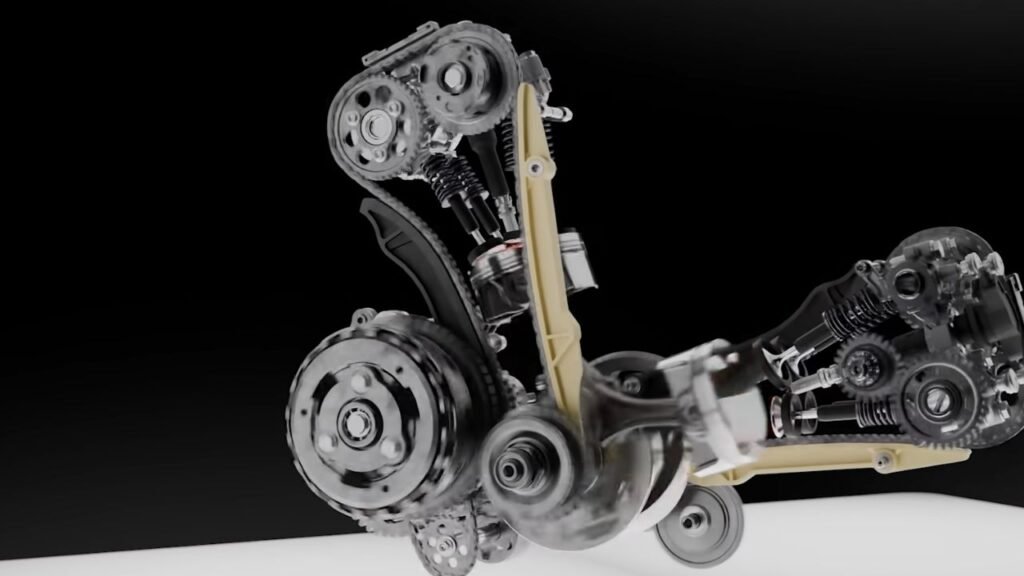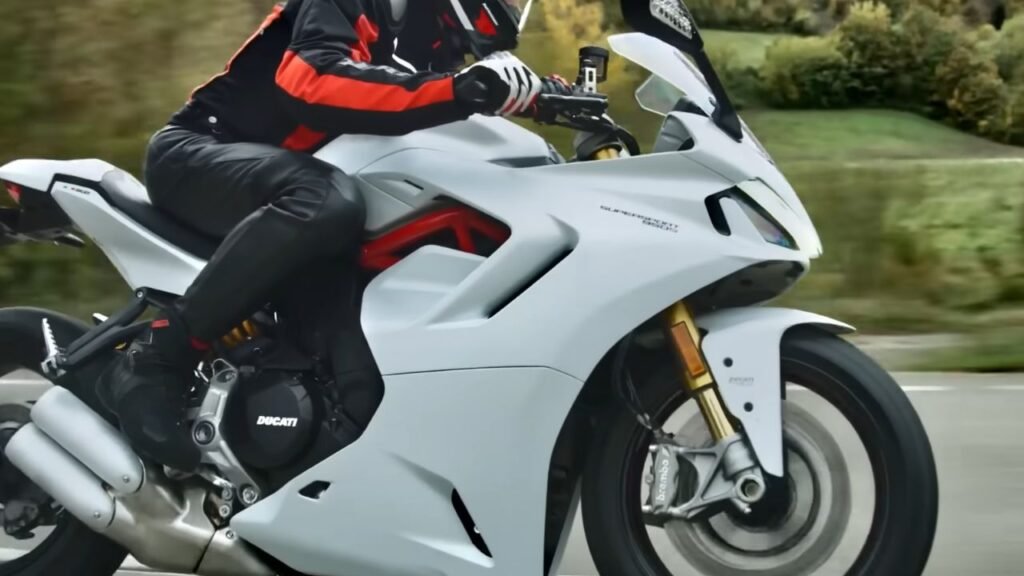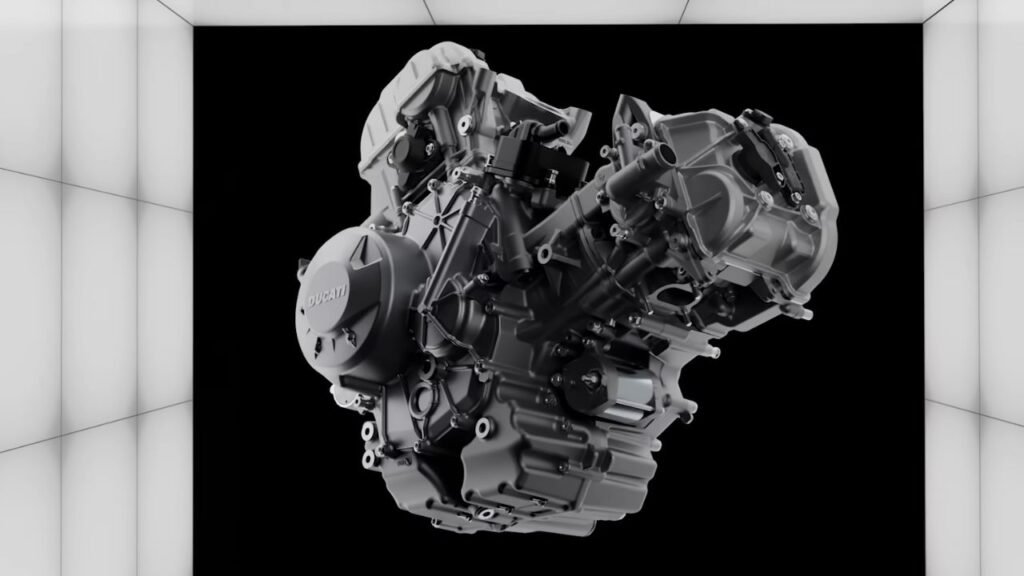Ducati, known for its cutting-edge technology and performance-driven motorcycles, has just announced a new V-twin engine that could change the game for many of their bikes. This new powerplant is set to replace both the Testastretta and Superquadro engines, which have powered some of Ducati’s most iconic models. As Ducati fans and riders, this news is big because the Testa stretta is a staple engine that has been used in everything from the Multistrada to the SuperSport. This shift to a new engine means potential upgrades, changes in performance, and, perhaps, a completely new riding experience for Ducati enthusiasts. So, let’s break down the key points of what this new engine brings to the table and how it will affect Ducati’s lineup.
1. The Classic Ducati V-Twin Layout

As expected, Ducati’s new engine is a 90° V-twin, which has been a signature layout for the brand for many years. Ducati’s mastery of the V-twin configuration has allowed them to achieve impressive power and torque delivery while maintaining that distinctive Ducati engine sound.
However, the big news with this new engine is the cylinder orientation. The cylinders are rotated slightly back around the crankshaft, with a 20° angle between the front cylinder and the horizontal plane. This is a crucial change as it helps optimize weight distribution, making the bike more stable and responsive in corners. This small shift in the layout could have big implications for handling and overall rider comfort, especially for long-distance touring bikes or aggressive sport models.
2. Aiming for Optimal Weight Distribution

The decision to rotate the cylinders and tweak the weight distribution is not just about performance—it’s about rider experience. Ducati engineers have focused on improving the bike’s center of gravity. By adjusting the engine layout, they’re aiming to reduce mass centralization. This means better handling, especially when cornering or transitioning between curves. For Ducati riders, that translates to more precise control and agility on both road and track.
Weight distribution plays a vital role in motorcycle dynamics, and with this change, Ducati is clearly aiming to improve the balance and stability of its bikes, whether you’re on a streetfighter or a superbike.
3. The Middle Ground: Bore and Stroke

The engine’s bore and stroke configuration is another interesting detail. Ducati claims that the new V-twin engine sits as a “halfway house” between the old Testastretta and Superquadro engines. This means it finds a middle ground between high-revving performance and all-rounder road-friendly power delivery.
The Testastretta engine, found in bikes like the Multistrada V2, SuperSport, and Desert X, was known for being an all-rounder with a focus on road use. It provided solid mid-range torque and was more road-biased, offering a comfortable yet engaging experience for long-distance touring.
On the other hand, the Superquadro engine, which powered Ducati’s high-performance machines like the Panigale V2 and Streetfighter V2, was designed for aggressive, high-revving performance. It was more top-end focused, delivering impressive horsepower at higher revs and suited for track days and high-performance riding.
With the new engine, Ducati aims to deliver the best of both worlds. It offers a bore size of 96mm and a stroke of 61.5mm, which sits in between the two older engines. This means that the new V-twin will be capable of producing strong low-to-mid-range torque, while still being able to rev up higher for that top-end performance many Ducati riders crave. Essentially, Ducati is aiming for a balance that can serve everything from long rides to spirited track sessions.
4. Performance Across Ducati’s Lineup
So, how will this new engine impact Ducati’s models? The Testastretta engine has powered a wide range of bikes, including the Multistrada, SuperSport, HyperMotard, and DesertX. These bikes are known for their versatility, comfort, and reliability. Now, with the new engine, Ducati could improve the performance and efficiency of these models while offering even better weight distribution, more power, and a smoother ride.
Meanwhile, the Superquadro engine powered the high-performance models like the Panigale V2 and Streetfighter V2, which are engineered for maximum power and track-ready performance. The new engine could bring a more versatile power delivery to these bikes, giving them a smoother transition from street riding to track performance without compromising on outright performance.
5. Efficiency and Fuel Economy

One of the more subtle yet important benefits of this new engine could be an improvement in fuel efficiency. By optimizing the engine’s bore and stroke, along with the improved weight distribution, Ducati might have been able to increase fuel efficiency without sacrificing performance. This is particularly important for riders of touring bikes like the Multistrada, who spend long hours on the road.
A more efficient engine could also mean longer intervals between refueling, making it easier to take those extended road trips or weekend adventures without constantly thinking about fuel stops.
6. Improved Heat Management

Ducati is also known for pushing the limits of performance, and with that comes the challenge of heat management. Older V-twin engines, especially high-performance ones like the Superquadro, could get hot under the pressure of heavy usage. This new engine, with its more optimized layout and cooling system, could see improvements in heat dissipation, making it more comfortable to ride during longer, harder sessions.
7. Sound and Character
Ducati engines are famous for their unique sound—rich, throaty, and unmistakably Ducati. The new engine is expected to retain this signature growl while still offering more refined power delivery. The shift in cylinder orientation and engine balance could alter the sound slightly, but Ducati fans can rest assured that the character of the V-twin will remain intact.
8. What It Means for the Future of Ducati
This new V-twin engine is more than just a replacement for older engines. It represents Ducati’s vision for the future of performance motorcycles. The move to a more versatile, balanced engine means Ducati could be making their bikes more accessible to a wider range of riders, whether you’re a weekend warrior or a track enthusiast.
Moreover, this move shows Ducati’s commitment to innovation. As they continue to push boundaries in design, handling, and performance, this new engine will likely be featured in upcoming models for years to come.
Conclusion: Ducati’s Bold Move
Ducati’s new V-twin engine is poised to be a game-changer. By merging the best characteristics of the Testastretta and Superquadro engines, Ducati is setting up a future of bikes that offer a more refined, efficient, and versatile ride. Whether you’re a long-distance rider or someone who craves the thrill of a weekend track day, this engine seems designed to please all types of Ducati fans. As Ducati continues to innovate, this engine could be the beginning of a new era for one of the most iconic motorcycle brands in the world.


